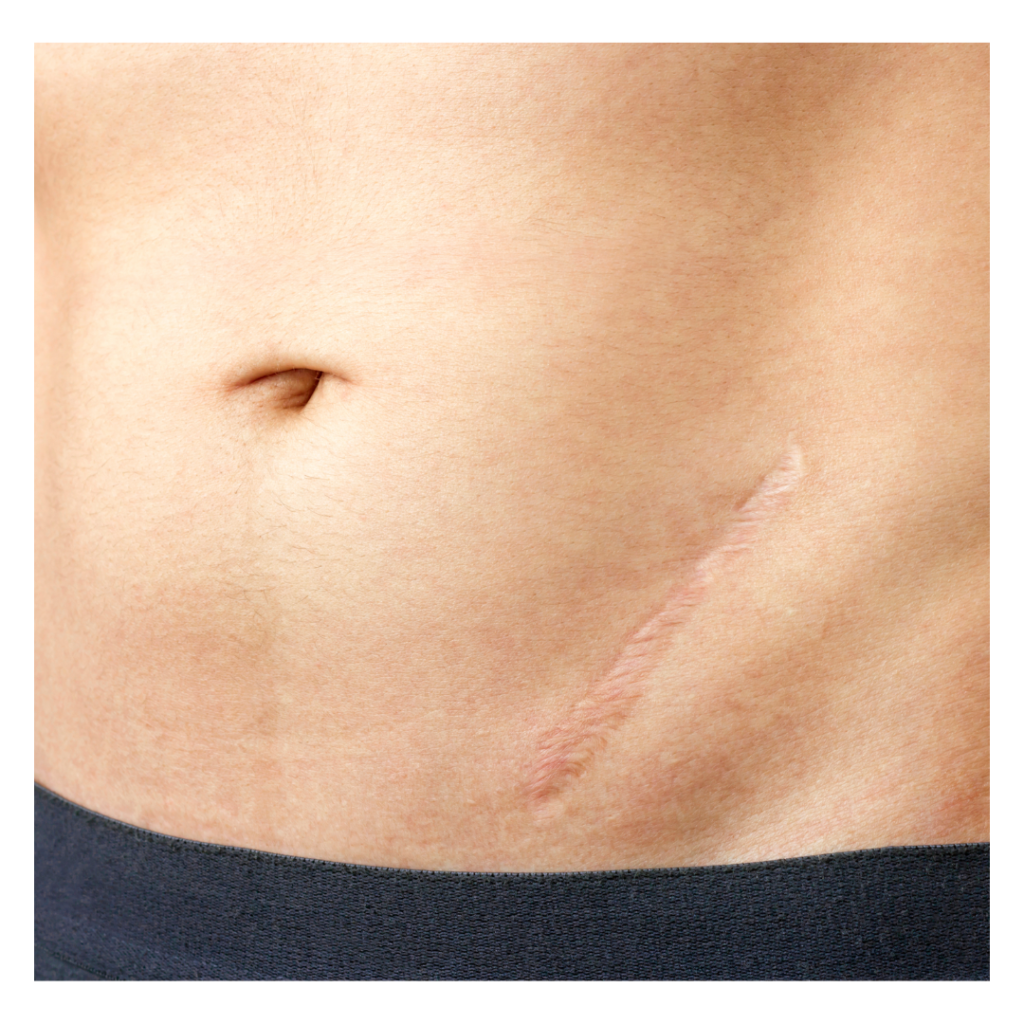Scars & stretch marks are very common skin concerns that affect a lot of people across all ages & backgrounds. No matter if these scars or skin concerns result from surgery, accidents, pregnancy, or frequent weight fluctuations, these particular marks often leave individuals feeling self-conscious about their appearance. While some may embrace these natural skin changes, others often seek effective solutions in order to reduce their visibility. One emerging technique gaining popularity is scar and stretch mark camouflage— which is a semi-permanent procedure that fairly helps blend these particular marks into your natural skin tone.
In this blog, we will explore the necessary details of scar & stretch mark camouflage, how it essentially works, who it benefits, & what to expect during this process of treatment.
What is Meant by Scar & Stretch Mark Camouflage?
Scar & stretch mark camouflage, also known as paramedical tattooing or skin camouflage tattooing, is a specialized form of cosmetic tattooing that intelligently uses pigments to reduce the visibility of scars, stretch marks, or other skin imperfections. The goal is to match the pigments to your skin tone as closely as possible, making the visible scars or stretch marks less noticeable.
This particular technique is not a cure for scars or stretch marks, but rather an aesthetic solution that fairly minimizes their appearance to a large extent. By tattooing pigments into the skin, this particular treatment facilitates these marks to blend into the surrounding skin, creating the illusion of a smoother, & more even complexion.

How Does Scar & Stretch Mark Camouflage Work?
This particular procedure involves using certain specialized needles & pigments to deposit color into the affected areas of the skin with a specialized technique. The pigments are carefully chosen in order to match the client’s natural skin tone. This process requires a skilled professional who can identify the subtle differences in color.
Here’s a step-by-step overview of the entire process:
- Consultation – During the phase of initial consultation, the professional will thoroughly assess your skin & scars or stretch marks. They will then discuss your goals, explain how the particular procedure works, & determine if you are a suitable candidate for this treatment. They may also perform a patch test in order to ensure that the pigments match your skin tone well and that you do not undergo or experience any allergic reactions.
- Selection of Pigment – One of the very critical steps in the camouflage procedure is the selection of the correct pigment color. This specifically requires an understanding of skin undertones and how they can change based on certain factors such as lighting, tanning, or aging.
- Tattooing Process – This procedure itself is similar to traditional tattooing, where certain specialized needles are used to implant the pigments into the top layers of the skin. However, unlike decorative tattoos, the goal here is to achieve a natural, undetectable result.
- Healing Process– After the completion of the procedure, the treated area will take time to heal. Some swelling or redness is usually common, but these side effects typically subside within a few days after the treatment is done. Over time, the skin will absorb the pigment, and the final results will become visible.
- Touch-Ups – Like several cosmetic procedures, scar & stretch mark camouflage may require touch-ups in order to maintain the results. Pigments can fade over the passage of time, specifically if the treated area is exposed to sunlight frequently. Your technician will advise you on how often you may require touch-ups based on your skin type and lifestyle.
Benefits of Scar & Stretch Mark Camouflage
There are several reasons why scar and stretch mark camouflage has become a popular option for people seeking to reduce the visibility of their scars or stretch marks:
- Natural Appearance – The primary benefit is that it provides a natural, skin-like finish. When done by a skilled professional, the treated area blends seamlessly with the surrounding skin.
- Boosts Confidence – Many people feel self-conscious about their scars or stretch marks, especially if they are in visible areas like the arms, legs, or abdomen. Camouflage can significantly reduce their appearance, helping individuals regain their confidence.
- Long-Lasting Results – While the results are not permanent, they can last for several years with proper care. Compared to topical creams or other temporary treatments, tattooing provides a more durable solution.
- Minimal Downtime – The procedure typically involves minimal recovery time. Most people can resume their daily activities within a day or two, although they should follow aftercare instructions closely to ensure proper healing.
- Non-Invasive – Scar and stretch mark camouflage is a non-invasive procedure that offers an alternative to more intensive treatments like surgery or laser therapy.
Who is a Good Candidate?
Scar and stretch mark camouflage can be effective for a wide range of people, but not everyone is an ideal candidate. Here are some factors to consider:
- Age of Scars/Stretch Marks – The marks should be at least one to two years old. Fresh scars that are still healing or red may not respond well to the treatment.
- Color of Scars/Stretch Marks – Camouflage is most effective on scars and stretch marks that are lighter than the surrounding skin. Darker scars may require different treatment methods.
- Skin Tone -People with medium to darker skin tones typically see the best results from this procedure. It can be more challenging to match very light or pale skin tones.
- Medical Considerations – If you have certain medical conditions, such as keloid scarring or skin disorders, you may not be a good candidate for the procedure. Always consult with a professional to determine if this treatment is right for you.
Aftercare Tips for Scar & Stretch Mark Camouflage
After the procedure, following proper aftercare instructions is essential to ensure the best results. Here are some common aftercare tips:
- Avoid Sun Exposure – The treated area should be kept out of direct sunlight, as UV rays can cause the pigments to fade or change color.
- Keep the Area Clean – Gently cleanse the area with mild soap and water. Avoid scrubbing or using harsh chemicals.
- Moisturize – Use a recommended healing ointment or moisturizer to keep the skin hydrated during the healing process.
- Avoid Swimming – Refrain from swimming in pools, lakes, or oceans for at least two weeks after the procedure to prevent infection.
- Follow Up – Attend any follow-up appointments to assess the healing process and determine if touch-ups are necessary.
Are There Any Risks?
Like any cosmetic procedure, scar and stretch mark camouflage comes with some risks. These may include:
- Allergic Reactions – Some individuals may react to the pigments used in the procedure.
- Infection -If proper hygiene isn’t followed, there is a risk of infection.
- Unsatisfactory Results – In rare cases, the pigment may not blend as expected, or the results may fade more quickly than anticipated.
Conclusion
Scar and stretch mark camouflage is an innovative, semi-permanent solution for individuals looking to reduce the appearance of unwanted skin marks. With the right care and a skilled professional, it can offer natural-looking, long-lasting results that boost confidence and self-esteem. If you’re considering this treatment, consult with an experienced technician to discuss your specific needs and goals.
Stay Updated With Discreet Cosmetic Studio
Don’t miss out on the latest updates from Discreet Cosmetic Studio. Stay tuned to our Facebook, Instagram and YouTube for the latest updates.

